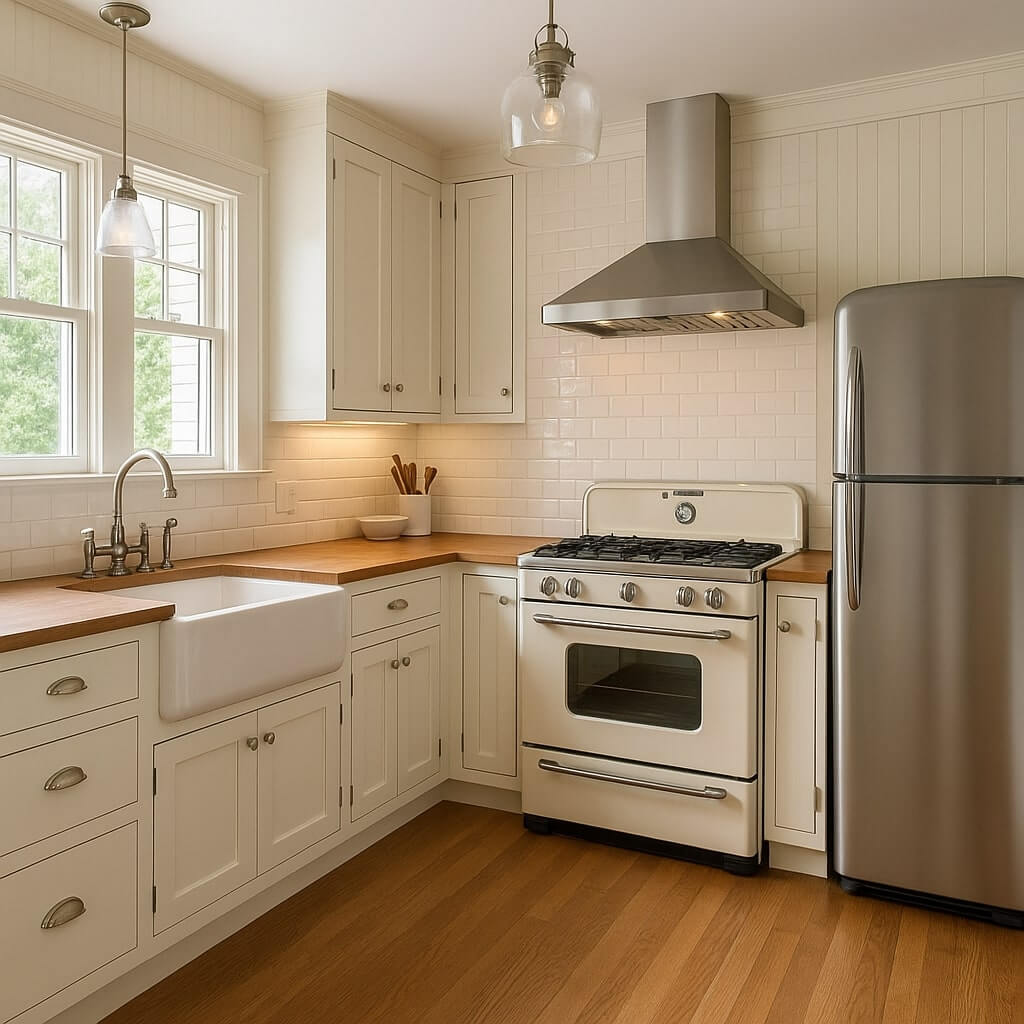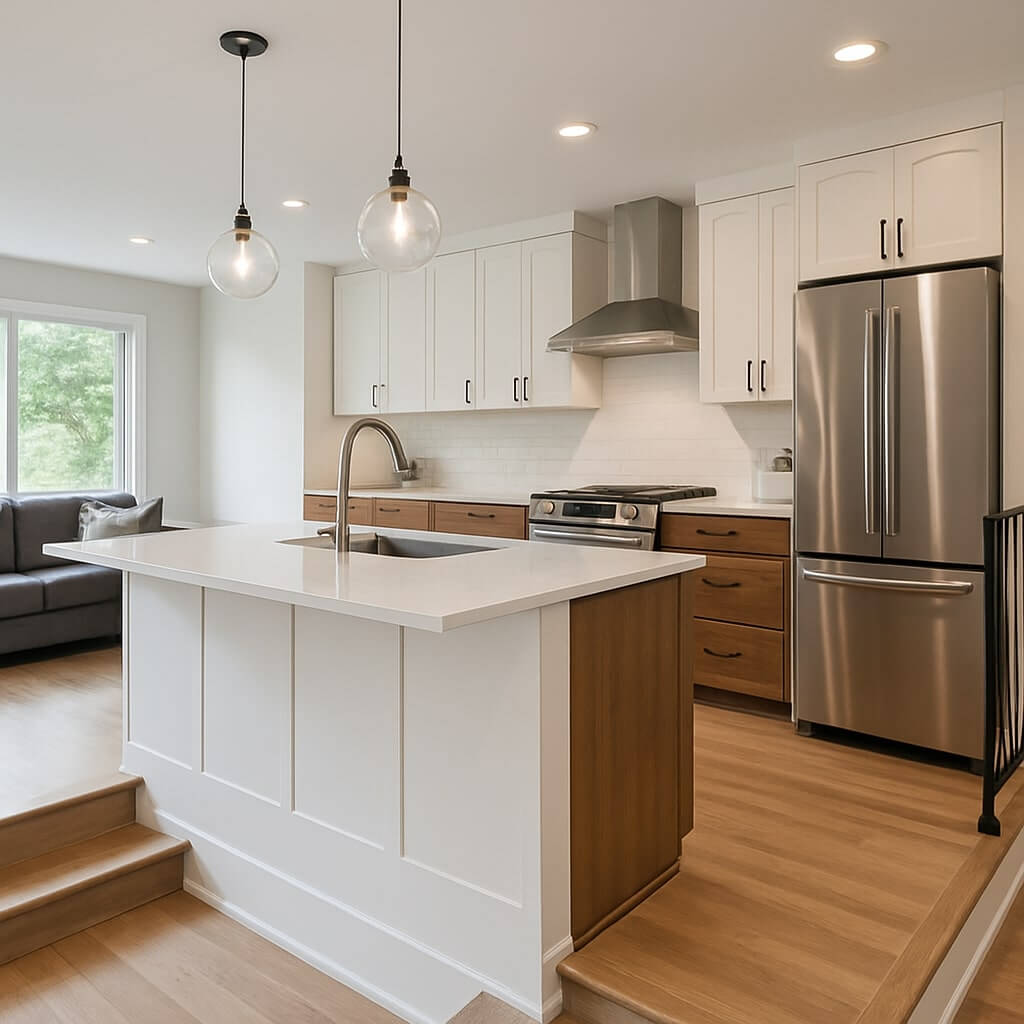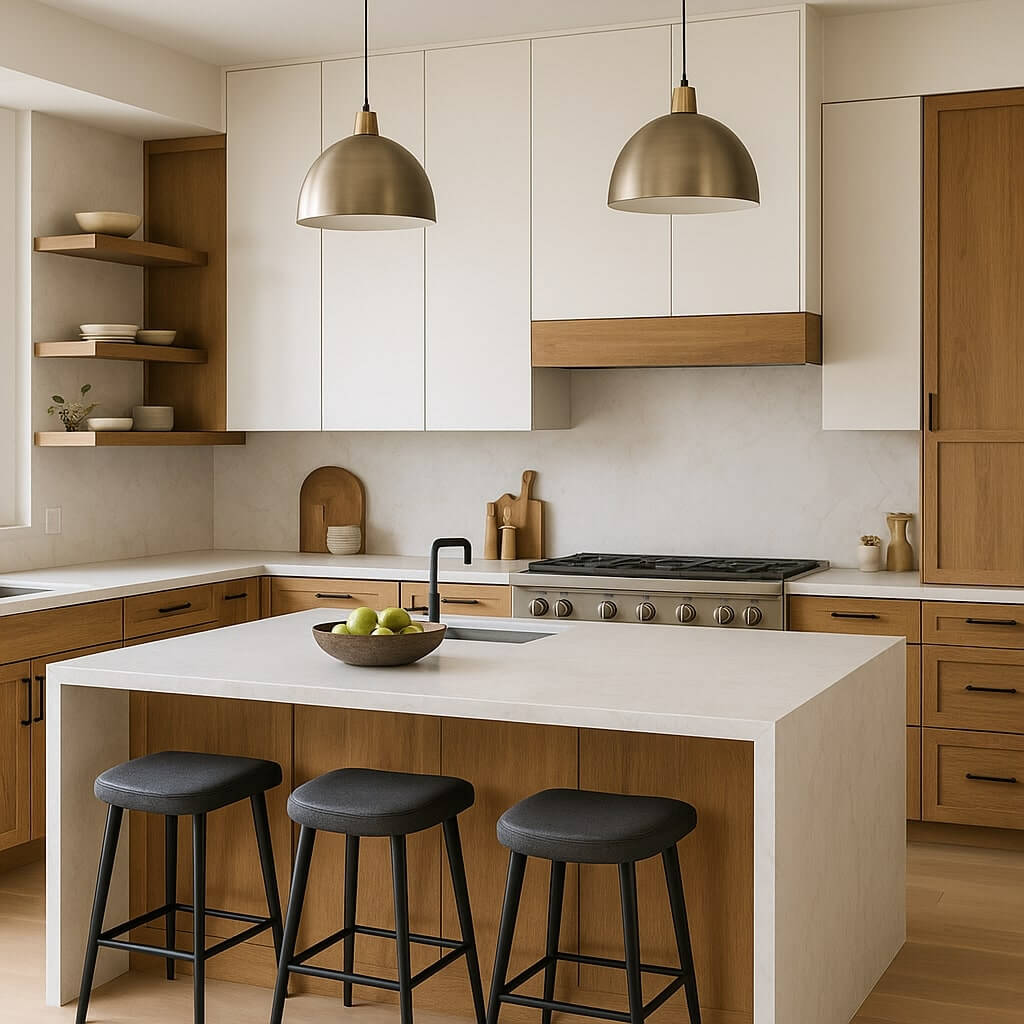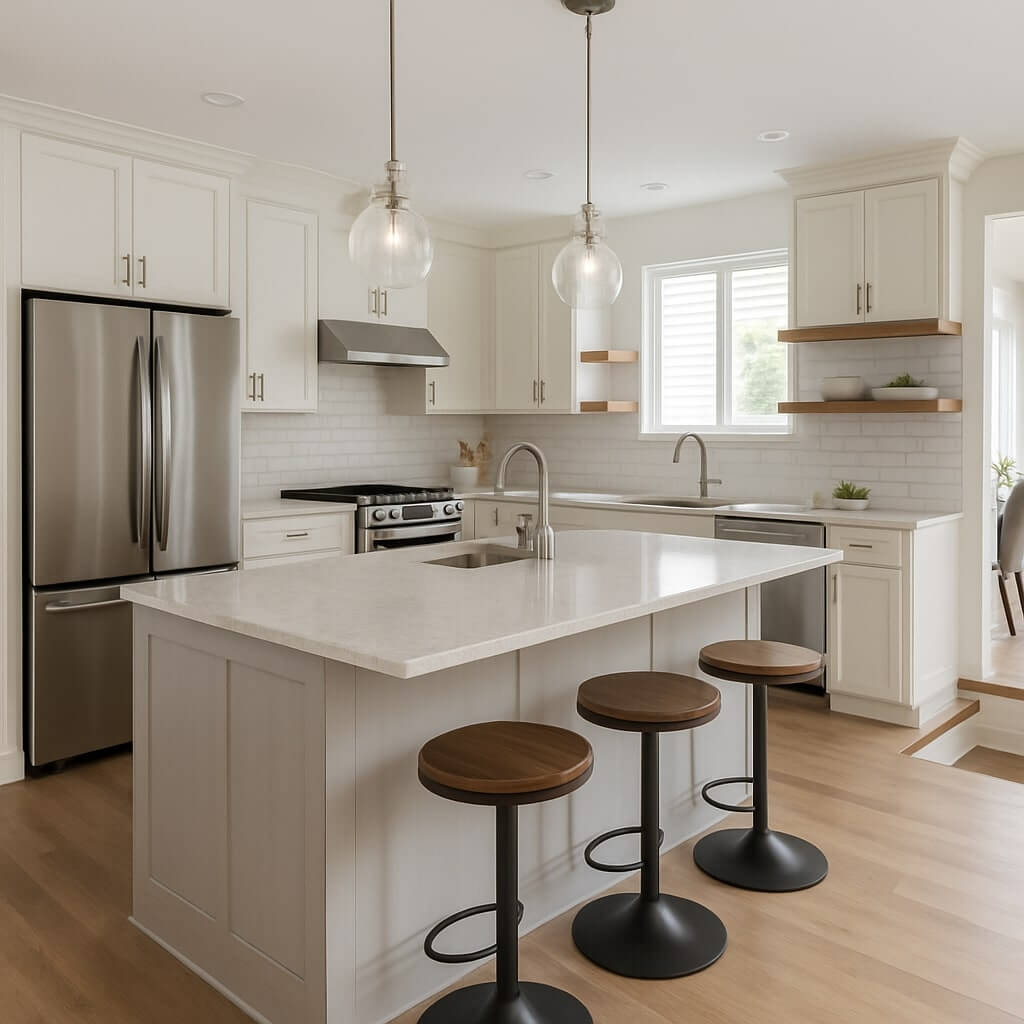A 1950s Cape Cod kitchen remodel offers the perfect opportunity to blend timeless vintage charm with modern functionality. These cozy, well-loved homes feature distinctive characteristics — low ceilings, dormer windows, and compact kitchens. With thoughtful updates, you can preserve the nostalgic charm of the era while creating a kitchen that meets the needs of contemporary living.
Whether you are restoring an original 1950s Cape Cod or refreshing a dated remodel, this guide will help you strike the right balance between past and present.
Understanding the 1950s Cape Cod Kitchen
Cape Cod homes built in the 1950s typically feature:
- Modest footprints
- Closed-off kitchen spaces
- Basic cabinetry with little ornamentation
- Linoleum floors
- Metal or laminate countertops
- Limited storage
While these kitchens have plenty of character, they can also feel dark and cramped by modern standards. The goal of a successful remodel is to retain the warm, welcoming feel of a Cape Cod kitchen while enhancing its usability, light, and flow.
Key Design Ideas for a 1950s Cape Cod Kitchen Remodel
1. Open Up the Space
Knock down non-load-bearing walls between the kitchen and dining or living areas. This instantly makes the kitchen feel larger and allows for better circulation of light.
2. Preserve Vintage Elements
Keep signature details such as:
- Beadboard wainscoting
- Original wood floors (refinished)
- Classic cabinet hardware
- Farmhouse sinks
Incorporating these elements helps retain the home’s personality.
3. Update Cabinetry
Consider custom cabinetry that mimics the original simple lines but adds modern conveniences such as:
- Soft-close hinges
- Pull-out shelves
- Deep drawers for pots and pans
Choose finishes in white, cream, or soft pastels to match the 1950s aesthetic.
4. Upgrade Appliances
Retro-style appliances can add period charm while offering modern performance. Look for ranges, refrigerators, and dishwashers in vintage-inspired designs and colors.
5. Modern Countertops
Swap out worn metal or laminate counters for durable, timeless options such as:
- Butcher block
- Soapstone
- Quartz in light, natural tones
These materials suit the home’s aesthetic while providing durability.
6. Brighten the Room
To counteract the typically low ceilings, add:
- Recessed lighting
- Pendant lights over the sink or island
- Under-cabinet lighting to brighten work surfaces
7. Choose Period-Appropriate Tile
Consider adding a backsplash with:
- Classic subway tile
- Checkerboard tile patterns
- Small hexagonal floor tiles in black and white
These details reinforce the vintage feel.
Functional Improvements to Consider
- Increase countertop workspace
- Add pantry storage if space allows
- Improve ventilation with a quality range hood
- Upgrade plumbing and electrical systems for modern safety and convenience
Final Tips for Your Remodel
- Work with a contractor experienced in older homes to preserve architectural integrity.
- Be mindful of building codes that may affect what’s possible with an older structure.
- Stick with a cohesive color palette that harmonizes vintage and modern elements.
FAQ: 1950s Cape Cod Kitchen Remodel
Retain original features like wood floors, beadboard paneling, and classic cabinet hardware. Use period-appropriate colors and tile patterns to enhance the vintage look.
Opening up the kitchen to adjoining rooms, adding an island, or creating an eat-in kitchen nook are popular ways to improve flow and function while maintaining charm.
Absolutely. Choose retro-inspired modern appliances that match the aesthetic of the home but provide current functionality.
Butcher block, soapstone, and light-colored quartz blend well with the era’s style and offer modern durability.
Remove walls where possible, use light color palettes, incorporate good lighting, and add reflective surfaces like glossy tile backsplashes.




